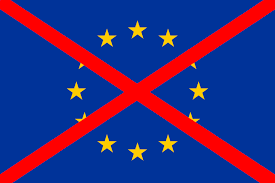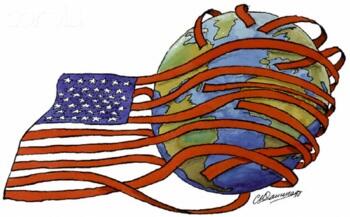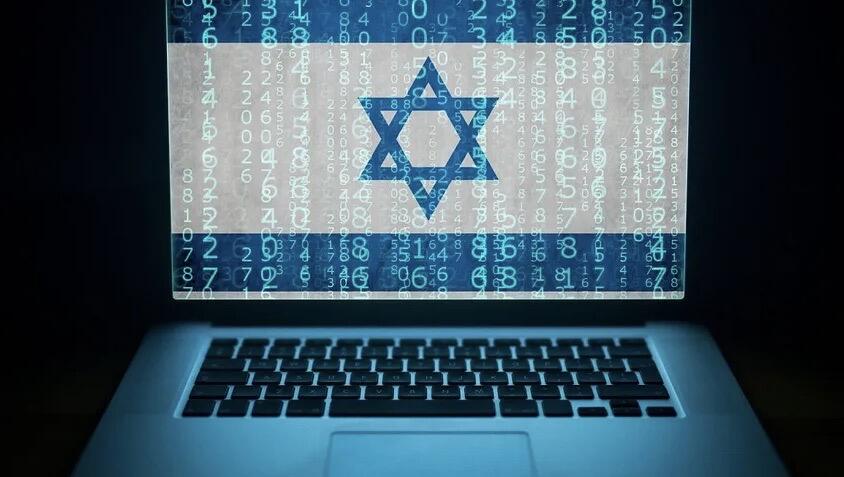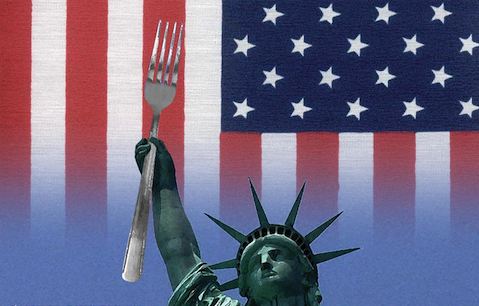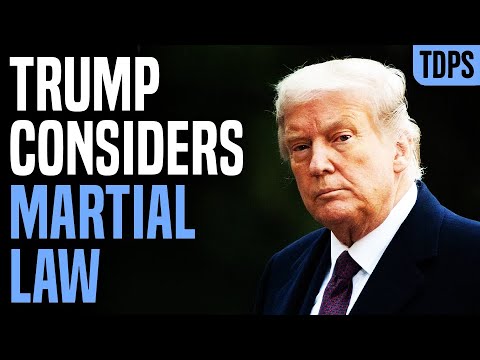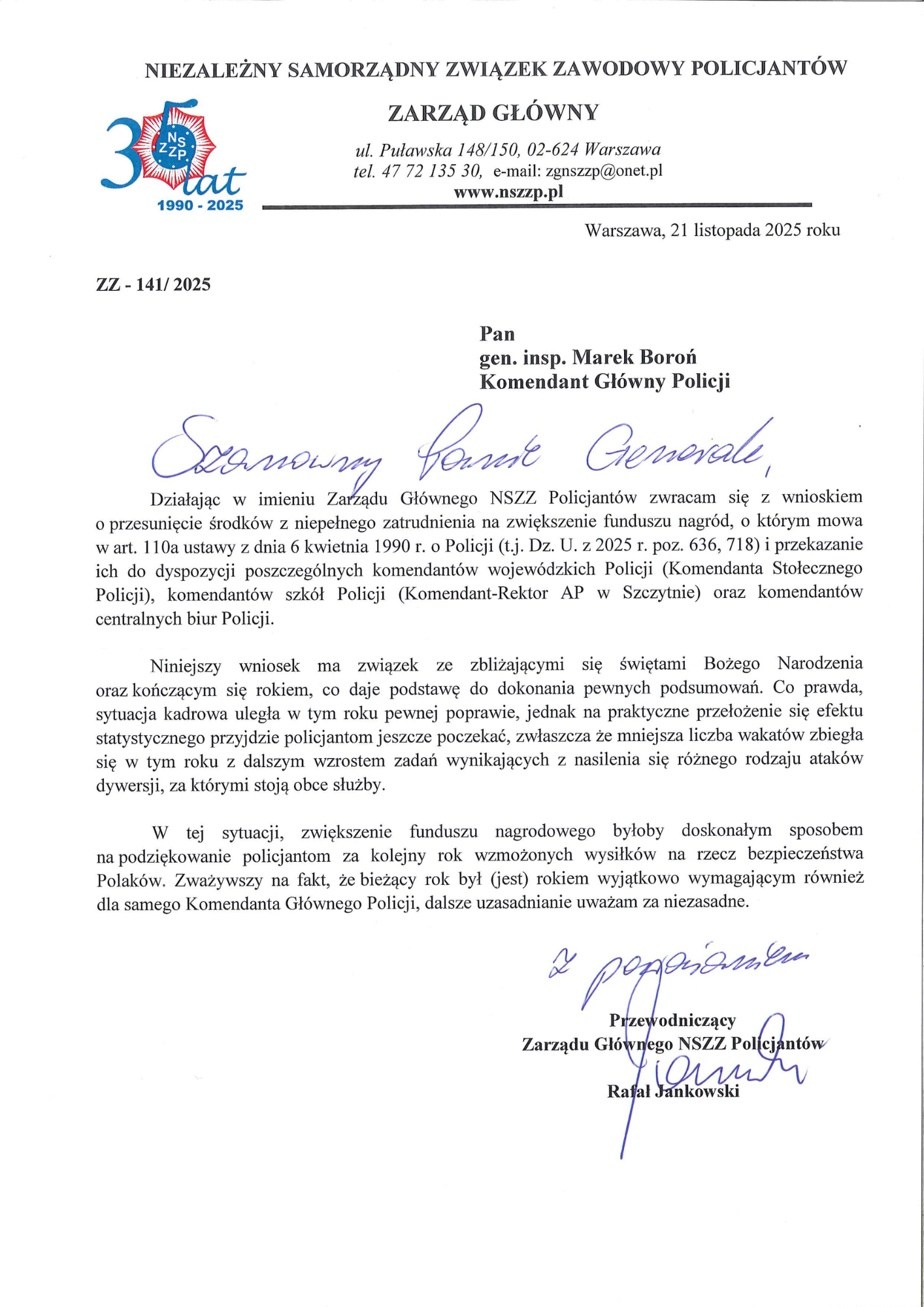
BRICS, Boers, & Beginning Battle With China In South Africa: Examining The US Pressure Campaign
Authored by Conor Gallagher via nakedcapitalism.com,
Trump’s February 7 executive order “Addressing Egregious Actions Of The Republic Of South Africa” cuts off aid or assistance to the country and “promote[s] the resettlement of Afrikaner refugees.” The stated reasons for the administration’s actions are a new law that, according to White House, will “enable the government of South Africa to seize ethnic minority Afrikaners’ agricultural property without compensation. There are also “aggressive positions” towards the US and its allies, namely Israel, which the administration refers to with regards to South Africa’s genocide case at the International Court of Justice.
More broadly, the executive order states that South Africa is “undermining United States foreign policy, which poses national security threats to our Nation, our allies, our African partners, and our interests.”
While the charge of anti-white racism fits neatly with the empire’s new brand of identity politics, and the retribution for the ICC case against Israel is to be expected from any US administration, what of the other “undermining” of US foreign policy and “threats” to the US and its interests?
As the recent news surrounding the Panama Canal, Greenland, and other areas show, the US is doubling its efforts to control global shipping lanes — likely in preparation for a conflict with China — but this has gone unmentioned in connection to the pressure campaign against South Africa. I’ll explore that here after quickly looking at the plight of the Afrikaners.
Serfs Vs. the “Rising Neo-Feudalism of Silicon Valley”?
The new Expropriation Act allows the South African government to expropriate land from private parties, but only if it’s in the public interest and under certain conditions. More from the AP:
[Trump] said South Africa’s government was doing “terrible things” and claimed land was being confiscated from “certain classes.” That’s not true, and even groups in South Africa who are challenging the law say no land has been confiscated. The South African government says private property rights are protected and Trump’s description of the law includes misinformation and “distortions.”
However, the law has prompted concern in South Africa, especially from groups representing parts of the white minority, who say it will target them and their land even though race is not mentioned in the law.
The law is tied to the legacy of the racist apartheid system, and colonialism before that, and is part of South Africa’s efforts over decades to try and find a way to right historic wrongs.
Under apartheid, Black people had land taken away from them and were forced to live in designated areas for non-whites. Now, whites make up around 7% of South Africa’s population of 62 million but own approximately 70% of the private farming land, and the government says that inequality needs to be addressed.
In reality, the law will likely do little to address it. Here’s TRT World:
In an article titled ‘Land seizure and South Africa’s new expropriation law: scholar weighs up the act’, law professor Zsa-Zsa Temmers Boggenpoel explained that the new law governs the compulsory acquisition of private property by the state for public purposes or in the public interest. It aims to align expropriation procedures with the Constitution and provide clear guidelines on compensation.
She said “expropriation of property is a potential tool to reduce land inequality. This has become a matter of increasing urgency. South Africans have expressed impatience with the slow pace of land reform.”
So far, she said, expropriation has not been used effectively to redistribute land more equitably, as part of land reform. “I am not convinced that the act, in its current form, is the silver bullet to effect large-scale land reform – at least not the type of radical land reform that South Africa urgently needs,” said the law professor.
So the Trump administration’s order will largely punish South Africans with HIV — ostensibly over land reform law that does little land reforming. The US is cutting off aid, which includes about $440 million last year and funds 17 percent of the country’s HIV program, which is the largest in the world, helping many of the 8 million people in the country living with HIV.
South Africa also benefits from preferential access to the US market for its exports under the African Growth and Opportunity Act, which the US could use to apply more pressure on the country.
I’m not all that familiar with South Africa’s political scene (hopefully we have some readers who can add some more domestic insight), but the connection to the Silicon Valley crazies is worth a mention here.
The ruling African National Congress (ANC) now appears to be under pressure on the expropriations act from its right — both domestically and abroad — as well as on its left where the Economic Freedom Fighters (EFF) criticize the law for not going far enough.
I’ve seen the EFF described as a “race-centric” program that overlooks the main source of oppression in post apartheid South Africa (capitalism), as well as the following:
It is the South African Economic Freedom Fighters which should be credited for reintroducing the property question – the fundamental premise of Communist politics – in the 21st century.
Land represents fundamental economic security and dignity, without which a people become… pic.twitter.com/zcLUzlALqL
— Haz Al-Din (@InfraHaz) February 16, 2025
According to Al-Din, this pits the EFF against the “rising neo-feudalism of Silicon Valley,” which has a particular interest in South Africa.
Elon Musk lived in the country until he was 17 and has for years bemoaned what he calls the country’s anti-white policies and made unfounded claims of the government encouraging “genocide” against white landowners.
Billionaire venture capitalist and White House AI and crypto czar David Sacks, left apartheid South Africa when he was five.
Billionaire vampire Peter Thiel spent part of his childhood in South Africa where his father was helping the apartheid regime mine uranium in a secret effort to obtain nuclear weapons. More from the Financial Times:
Southern Africa under apartheid offered an extreme version of some of the main themes of American life today. First, there was tremendous inequality. The mine where Thiel’s father worked was “known for conditions not far removed from indentured servitude”, writes Thiel’s biographer Max Chafkin. “White managers, like the Thiels, had access to a brand-new medical and dental centre in Swakopmund and membership in the company country club.” The mine’s black migrant workers lived in work camps.
To whites of a certain mindset, this inequality wasn’t due to apartheid. They thought it was inscribed in nature. Certain people were equipped to succeed in capitalism, while others weren’t. That was simply the way it was, and it was pointless to try to mess with nature. Two of Thiel’s contemporaries at Stanford in the 1980s recall him telling them that apartheid “works” and was “economically sound”.
Good to know what these techno-feudal lords are using as a template for their adopted home in the US. Due to their wealth and positions in/at the head of the US government, they now have an opportunity to atone for the failings of the fathers in South Africa while also helping drive the US rebrand from a “woke” empire to one decidedly not so. There are also wider strategic implications at play.
Shipping Lanes and China
South Africa has long been a supporter of Palestinians. It’s also a country with close ties to Russia due to Moscow’s help in fighting apartheid. And it’s a BRICS founding member. That’s three strikes in Washington. But the increased pressure from Trump can also be viewed in the context of the US’ renewed emphasis on shipping lanes, which has received a plenty of attention in the effort to purchase Greenland to muscle in on Arctic shipping routes and leaning on Panama for more control over its canal.
In South Africa this focus means a lot more attention for a small outpost in the Western Cape called Simon’s Town, which is home to the South African Navy’s largest base.
Why would Simon’s Town help explain US pressure on South Africa? Here are Dr Frans Cronje, head of the Washington DC-based Yorktown Foundation for Freedom, and Rear Admiral Robert Higgs (Ret), who commanded the Fleet of South Africa from 2008-2010 and served as Chief of Naval Staff from 2011 to 2016 (he was also the first SA Navy officer to attend the US Naval War College), writing at Real Clear World:
Simonstown’s contemporary importance is best understood as one of three points of a triangle that determines the balance of power in the Indo-Pacific.
That triangle is formed by drawing a 5,000 mile line northwards from Simonstown to Djibouti on the African east coast where the Bab al-Mandab Strait narrows the gateway into the Red Sea (and the Suez Canal beyond) to just 20 miles. The balance of power around that gateway shifted in 2016 when China was granted a lease on a naval base just more than a decade after the United States had secured a similar lease.
From Djibouti extend the line 8,000 miles eastward to the Solomon Islands off the east coast of Australia. The Japanese, after crippling the US Pacific Fleet at Pearl Harbor, sought to occupy the islands to isolate Australia and their retaking was a key allied objective in the liberation of South-East Asia. However, in April of 2022, eight decades after the defeat of Japan, China signed a security pact with the Solomon Islands. As the islands lie east of the confines of the two major “island chains” around which John Foster Dulles’ Pacific containment strategy was conceived at the end of the Second World War the Chinese pact is the starkest challenge yet to the idea of the Pacific as “America’s lake”.
Extend the line from the Solomon Islands back to Simonstown to complete the triangle and territory within sees the passage of more than half of all sea-borne global trade with the triangle’s three points determining access to the Red Sea, the South Atlantic, and the Pacific.
A few maps to help illustrate their point:
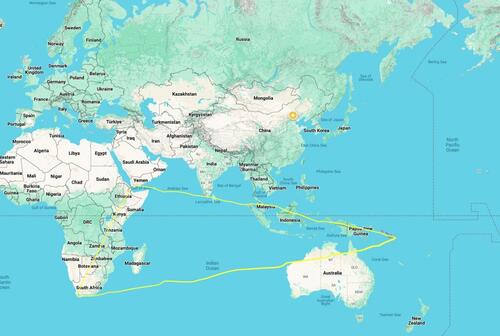
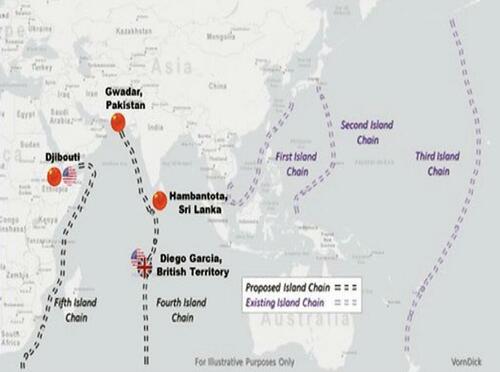
More from Cronje and Higgs:
Exacerbating American vulnerability in the Indo-Pacific is that at the triangle’s center is the Chagos Islands archipelago which Britain sought to surrender to Mauritius in October 2024. The archipelago contains the island of Diego Garcia which houses a US naval base (leased from Britain). Flying from Diego Garcia nuclear armed American aircraft can reach Australia, the southern and eastern regions of China, the southern points of eastern Europe, and much of the Middle East.
Whilst the British government provided assurances that the US might strike terms to continue operating from Diego Garcia this is not at all assured and the Trump administration has therefore moved swiftly to force a British about-turn. Mauritius is a signatory to an African nuclear weapons ban which may be employed as a pretext to undermine American activities on the island.
The extent to which America achieves a Monroe Doctrine inspired sphere of hegemonic influence in the Western hemisphere will be determined in part by whether backdoors into that envisaged sphere are left unguarded. The vulnerability at the Solomon Islands might be addressed from Guam and Hawaii whereas the Mediterranean presents a hard obstacle to China’s aims of reaching the Atlantic. Diego Garcia might yet be saved. That leaves South Africa’s Simonstown as the key external vulnerability.
Joel Pollak, another South African native close to the Trump administration who is currently a senior editor-at-large at Breitbart News but is considered the frontrunner to become the US Ambassador to South Africa, recently echoed these claims in explaining why Simon’s Town is of such interest to Washington. From Business Tech, a South African business news website:
“The reason Simon’s Town is important globally is the same reason South Africa has been important for hundreds of years,” he told Biznews. He explained that Simon’s Town is situated near the point where the Atlantic and Indian oceans come together.
“It remains important. Although it is a small port, it can be expanded. It is an important naval station in the Indo-Pacific.”
“There is a real concern that South Africa’s closeness to China could lead to it taking over key strategic assets that are important to the local economy,” he said.
Another possibility is that China can take over military installations that are important to maintain peace worldwide. Pollak said the United States wants to create a peaceful global environment which favours economic growth and prosperity.
That’s one way of putting it. Another is that the US is interested in the ability to shut down shipping lanes in a conflict with China. Reuters reported in December of 2023 how oil tankers from the Middle East crossing the Indian Ocean, as well as other shipments headed to China from Africa and Brazil, would “lack protection in a naval theatre dominated by the U.S.” More:
A dozen military attaches and scholars say that vulnerability is now being scrutinised as Western military and academic strategists discreetly game scenarios about how a conflict with China over Taiwan, or elsewhere in East Asia, could evolve or escalate.
In a major war, Chinese oil tankers in the Indian Ocean “would find themselves very vulnerable”, said David Brewster, a security scholar at the Australian National University…Four envoys and eight analysts familiar with discussions in Western and Asian capitals, some speaking on the condition of anonymity to discuss a sensitive topic, said this enduring weakness gives China’s adversaries a ladder of escalatory options, especially in a drawn-out conflict, like Russia’s war on Ukraine. These scenarios range from harassment and interdiction operations against Chinese shipping that could divert Chinese naval vessels to the region, up to a blockade and beyond.
So the strategy is to initiate a conflict between China and Taiwan or a country in East Asia like the Philippines and then attempt to isolate Beijing. It worked so well against Russia, why not give it another go against China with its much larger and more interconnected economy?
It’s also a strategy that Beijing is well aware of and has been preparing for for years through its Belt and Road Initiative. By driving Moscow and Beijing even closer together with Project Ukraine, the US made any attempt at isolating China even more impossible — which is perhaps why we now see the Trump administration trying to dictate peace terms as the loser that include Russia scaling back its ties with Beijing.
It deserves a mention that any US Blob dream of “isolating” Beijing would inevitably mean a collapse of the global economy and a contest of who could withstand the pain longer. China, which is striving for autarky and would, barring future developments, have direct land connections to Russia and Central Asia for minerals, natural resources, and other needs, might not get as hurt as some like to believe. The US, meanwhile, would face product shortages — including in a defense industry reliant on China — and inflation that would make recent years seem quaint by comparison.
Nevertheless, the quest for naval supremacy continues. We can see this at work in other Trump administration actions — from Greenland and Panama to others that have largely flown under the radar, such as pressure on India over the International North-South Transport Corridor and the sudden world-threatening emergence of ISIS in Somalia.
On Feb. 1, President Donald Trump ordered the first airstrike of his presidency, against alleged senior Islamic State commanders in northern Somalia. Soon after Jeff Bezos’ Washington Post was out with a story, “The Islamic State has regrouped in Somalia — and has global ambitions.”
Last year, the US signed a deal with the government of Somalia to construct up to five military bases for the Somali National Army in the name of bolstering the army’s capabilities in the ongoing fight against militant groups. According to the Quincy Institute for Responsible Stateraft, the bases are intended for the Danab (“Lightning”) Brigade, a U.S.-sponsored Special Ops Force that was established in 2014.
The US at first funded Danab from the State Department, which contracted with private security firm Bancroft Global. More recently, funding comes from the Pentagon’s proxy war fund called the 127e program, which bypasses congressional oversight by allowing US special operations forces to use foreign military units as surrogates in counterterrorism missions. Neat.
What this history and the supposed recent emergence of IS in Somalia tells us is, one, the result of US counterterrorism strategy is that terrorism continues to magically spread like wildfire in spots deemed important to the US, and two, Somalia will be getting more attention from Washington going forward. Samar Al-Bulushi and Dr. Ahmed Ibrahim on the why:
It is a clear indication of the growing geopolitical significance of the Horn of Africa, and comes at a time of mounting concerns (mostly attempts by Yemen’s Houthis to disrupt global shipping in solidarity with Palestinians in Gaza) about securing the flow of international commerce via the Red Sea.
Elsewhere, the US is trying to get tough on the International North-South Transport Corridor (INSTC), a land-and sea-based 7,200-km long network comprising rail, road and water routes that are aimed at reducing costs and travel time for freight transport in a bid to boost trade between Russia, Iran, Central Asia, and India.
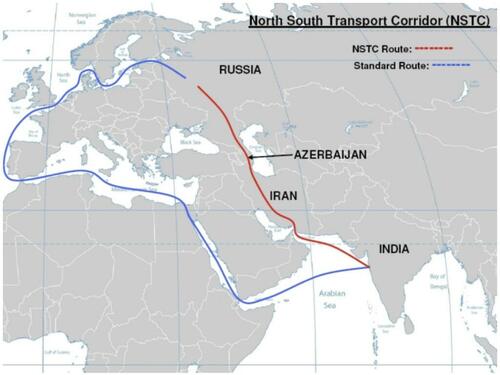
Last year, India signed a 10-year deal to develop and operate the port of Chabahar on Iran’s southeastern coast. It did so after assurances from Washington that Chabahar would continue to be exempt from sanctions as it had been since 2018. Well, the non-agreement-capable US has now changed its tune as Trump instructs the State Department to “modify or rescind” the waiver for Chabahar as part of the “maximum pressure” campaign on Iran.
We’ll have to wait and see if all these moves are part of Trump’s famous bargaining skills or if they represent a continuation of American efforts at global supremacy. For now, it looks like that although some of the tactics and areas of focus are undergoing a transitional period, the goal remains the same.
Tyler Durden
Thu, 02/20/2025 – 02:00
